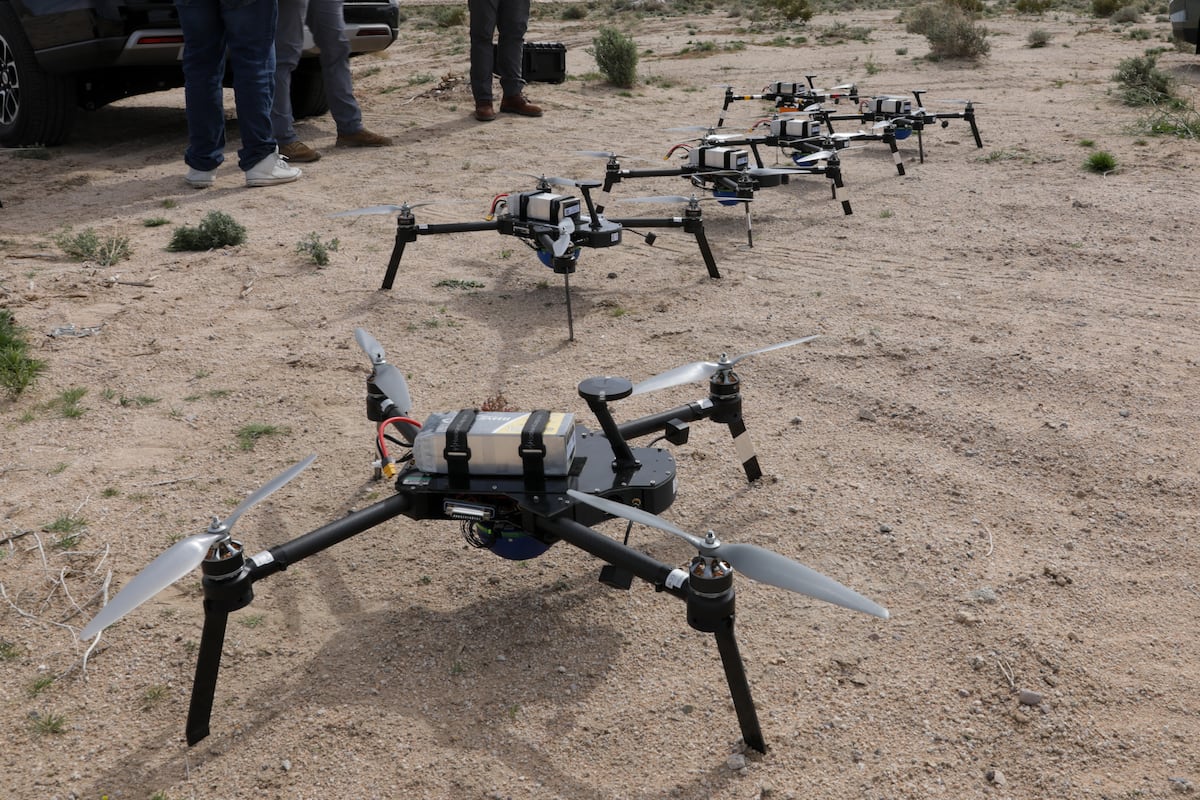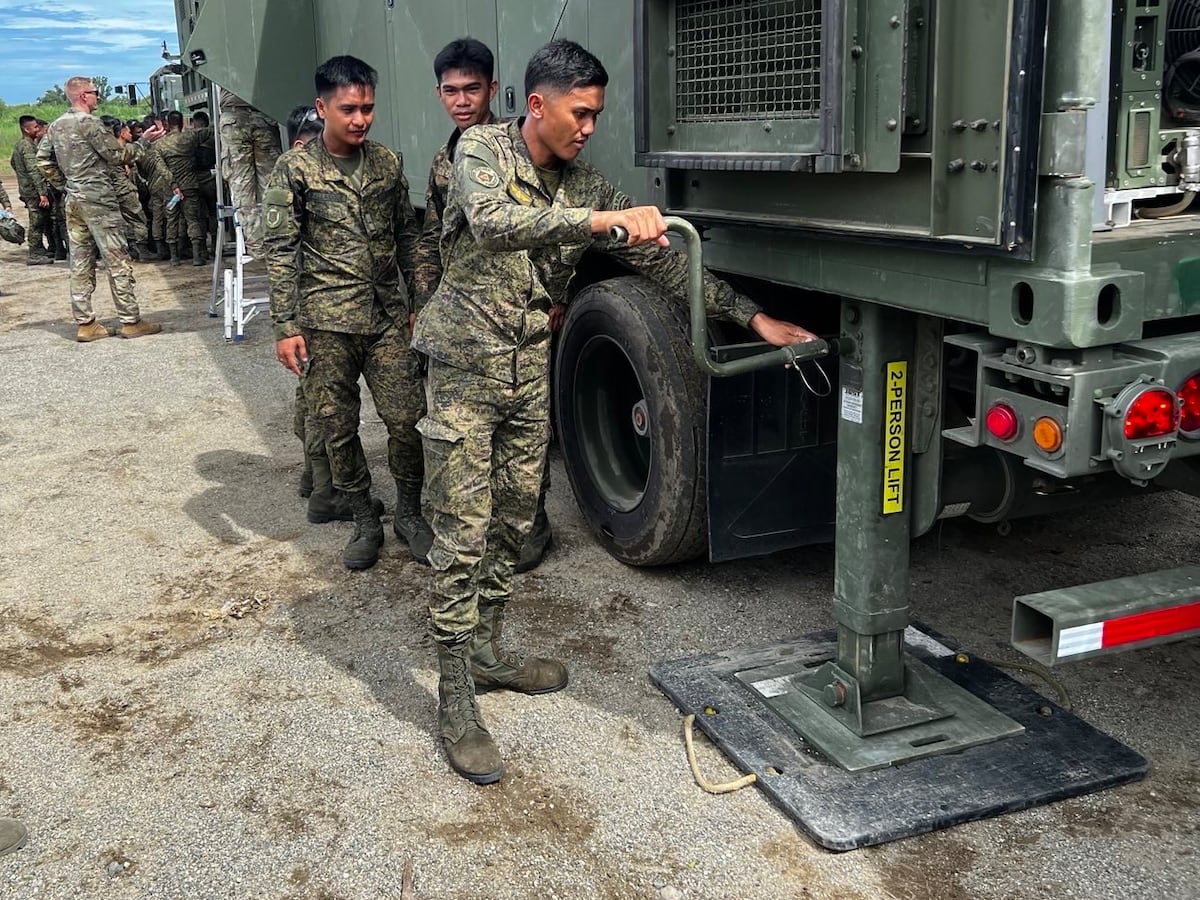In a speech last August, Kathleen Hicks listed the two most common questions about Replicator, her two-year pledge to buy thousands of drones and help the U.S. military compete with China.
“When we launched Replicator, a common refrain I heard was: ‘Can it work?’ These days I’m more likely to hear: ‘Will it stick?’” said Hicks, the deputy secretary of defense.
That second question soon won’t be hers to answer.
Since she first unveiled Replicator a year and a half ago, it’s nearly become a trademark. Hicks has sat in all of the Pentagon’s major meetings on it. She’s read every story published about the program, prepared in files from her staff. And she’s called its success a referendum on her leadership.
Senior Pentagon officials interviewed for this story said the program is on schedule largely through her effort. Now, as Hicks leaves office, the question is whether it can survive without her.
Republicans and Democrats have applauded the idea behind Replicator. To compete with China, they argue, the Pentagon needs cutting-edge weapons much faster. Hence, aides in Congress and executives at drone firms said they expect it to endure — albeit with changes.
And after 16 months, many officials working on the program outside the Pentagon say the biggest change it needs is size. Hicks made the bet to start Replicator, no small feat in a risk-averse bureaucracy, they acknowledged. But without more funding and more weapons on order, it won’t reach its true promise: a military nimble enough for the future of war.
“I would like to think that years from now, we would look back and say, ‘Yes, this began with the Biden administration,” said Chris Brose, an executive at the drone and software firm Anduril. “However, the real scale that this got to was delivered by his successors.”
‘Magnitude’
By early 2023, the problem was clear.
The year before, Russia had started a war with Ukraine dominated by trench warfare, artillery and increasingly drones. Both sides were building them in huge numbers to target, spy and attack at once, known in the military as “swarms.”
But these weren’t American drones. Instead, Ukraine’s soldiers were mostly buying and then tweaking their weapons from DJI, a Chinese company controlling 90% of the consumer market. U.S. firms weren’t only behind on building the weapons; their equipment wasn’t even needed.
“We know we have a problem on the production side: that DJI has just taken off with the international market. We needed to build out — we still do need to build out — that American industry,” Hicks said in an interview.
The deputy is close to the ultimate Pentagon insider. She took her first job in the building at the age of 23. And her habits reflect its culture of productivity. Hicks regularly schedules her day in 15-minute slots, she reads books on better managing her time and she returns hundreds of pages of reading to her staff each week marked with detailed notes.
So as the problem emerged, Hicks thought about how the Pentagon, internally, could solve it. American companies were indeed making high-tech drones. But the supply was small — in large part because the Pentagon was a picky customer. The period between signing a contract and actually getting equipment to troops often lasts more than 10 years.
The issue wasn’t just for Ukraine.
Hicks had entered office saying her top challenge was China, a country so large it could outpace America’s ability to build almost anything.
“It was the magnitude of all of the things,” said Mike Horowitz, a former top Pentagon policy official involved in Replicator, who listed out China’s ability to build a range of weapons: ships, submarines, drones, missiles. “They’re doing all of them simultaneously.”
Over the course of 2023, Hicks had been visiting Indo-Pacific Command, which oversees U.S. forces across the region, to watch troops experiment and exercise with new technology. She saw the need for more weapons that could punch above their weight. And she decided that if the Pentagon wasn’t buying enough of these already, she would make it.
In August that year, she took to the stage at a conference in downtown Washington and pledged two things. The Pentagon would field thousands of affordable drones within two years. And it would learn how to buy such weapons faster along the way.
Hicks called the two-part program Replicator, named after a gun from Star Trek that can form matter from thin air.
‘WD-40′
At first, other people in the Pentagon and Congress — largely unaware that the program was coming — had different names for it. Some called it confusing. Others worried it was a flash in the pan. Overall, the consensus at first was that Replicator was a good idea but that people couldn’t tell whether it was more than that.
“We had a candid conversation” before the announcement, said a senior defense official involved in the effort with Hicks, granted anonymity to talk freely. “I said we’re probably gonna get our asses kicked for eight to nine months in the press. Are you ready?”
Part of the skepticism came from how little Hicks’ team shared about the program after launching it. Because she didn’t want the idea choked by bureaucratic thorns, the deputy announced it without a full plan to discuss it publicly. Even more, her staff wasn’t entirely sure how it would work.
“My Italian family uses WD-40 for literally everything. — it’s like you have a cut [use] WD-40. So when we zoomed out, there were all these great innovation gears [inside the Pentagon] but some of them were a little squeaky,” the official said.
Replicator was meant to make these all click into place.
Atop the effort was the Defense Innovation Unit, tasked with bringing high-tech weapons into the military. Along with Hicks’ staff, it surveyed the different parts of the Pentagon from the Army to the Air Force, asking what drones would matter most for a fight with China and what they could buy the fastest.
At the same time, the team was working with military leaders in the Pacific and Congress, which later agreed to free up half a billion dollars for the effort (the same number made it into the next defense budget, which Congress has yet to pass).
In the year since, the Pentagon has announced several systems selected for the program: mostly underwater vehicles, small flying drones and loitering munitions meant to explode on impact. This last group will make up the bulk of the program, a congressional aide said. Of the 2,500 to 3,000 systems the Pentagon plans to deliver, over half will be the Switchblade 600, a kamikaze drone.
Hicks argued these results helped change the narrative.
“Replicator really depended on having that reputational advantage internally to make it happen. Now the Hill and the press — that reputational advantage probably needed to prove out another year. I think we’ve done that by just putting our heads down,” she said.
‘Dress rehearsal’
In a meeting last fall, another Pentagon official working on the program remembers getting goosebumps. Military leaders in the room were planning a Replicator “dress rehearsal” for early 2025 — a drill meant to prove how the weapons could all work together.
“There was this moment where we all realized how real this is,” said the official. It had gone from an idea to America’s top officers now discussing how it would work.
Since Hicks announced the program, it’s earned real staying power. Officials across Washington cite it as an example of how to jolt America’s slow bureaucracy. And military leaders in the Pacific have been happy to have someone advocating for their priorities.
Last fall, the Pentagon announced a second version of the program, this time focused on protecting American bases from incoming drones — a problem on display across the Middle East since Israel’s war began in Gaza.
But the drill this year is also a sign of the issues Replicator has yet to address. For one, the military is still deciding where to station the drones, which so far have been relatively short-range and would struggle to enter a fight. The answer is likely to put them on ships, said Adm. Sam Papapro, the head of Indo-Pacific Command, at an event last November.
Military leaders are trying to make sure the drones can resist jamming — a huge problem in Ukraine — and how to make the weapons work together. They’re also trying to decide how to sustain the weapons, since these drones are meant to be “attritable,” the Pentagon’s version of a plastic fork and knife compared to silverware.
“We’re now going from just buying the system to actually using it in an operationally relevant environment and assessing changes we need to make,” said Bryan Clark, a former Navy officer and analyst at the Hudson Institute, where he follows the program closely.
‘A solvable problem’
These tests won’t address the largest critique often leveled at Replicator: that it didn’t wasn’t big enough. China has huge stores of weapons, beyond what Horowitz listed earlier, and they’re growing. Thousands of relatively small drones won’t tip the military scales.
“The PRC has got 2,100 fighters, they’ve got three aircraft carriers, they have a battle force of 200 destroyers. Well, Roger, we’ve got a couple of drones,” Paparo said in November, using the common abbreviation for the People’s Republic of China.
Hicks staffers bristle at this critique. Replicator, they argue, was never meant to be the Pentagon’s only insurance program for a war with China. It was meant to teach the Pentagon a new way of doing business. Even more, it wasn’t like there were billions of extra dollars lying around for the program. Starting Replicator at its current scale was hard enough given how much the Pentagon bureaucracy can resist change.
“What Replicator did was juice the system and show that this is a solvable problem,” Horowitz said.
Indeed, Hicks and other top Pentagon officials say this effort is only one part in a much larger engine designed to get the military more advanced weapons.
In an interview last month, the head of Pentagon research and engineering explained the point by pulling out a complicated flow chart, illustrating how the Defense Department brings a new weapon on board.
“There’s the entire ecosystem. This is how we fit together. It isn’t [that] only one piece of the puzzle is important and the rest is irrelevant,” said Heidi Shyu, tracing the Replicator section of the chart with her finger.
Even critics accepted this argument: They could blame Replicator for not being something it was never meant to be. But Brose, the executive at Anduril, also said that the program’s scope should factor into its legacy. If the U.S. needed a true crash program to help defend Taiwan, or other parts of the Pacific, then Replicator may have missed the moment, even if it’s on track to meet its goals.
Still, that doesn’t mean they don’t want it to stick around. The Pentagon, at least, expects it to.
“Initiatives change names all the time,” the first official said.
Courtney Albon contributed to this story.
Noah Robertson is the Pentagon reporter at Defense News. He previously covered national security for the Christian Science Monitor. He holds a bachelor’s degree in English and government from the College of William & Mary in his hometown of Williamsburg, Virginia.
Read the full article here








Leave a Reply